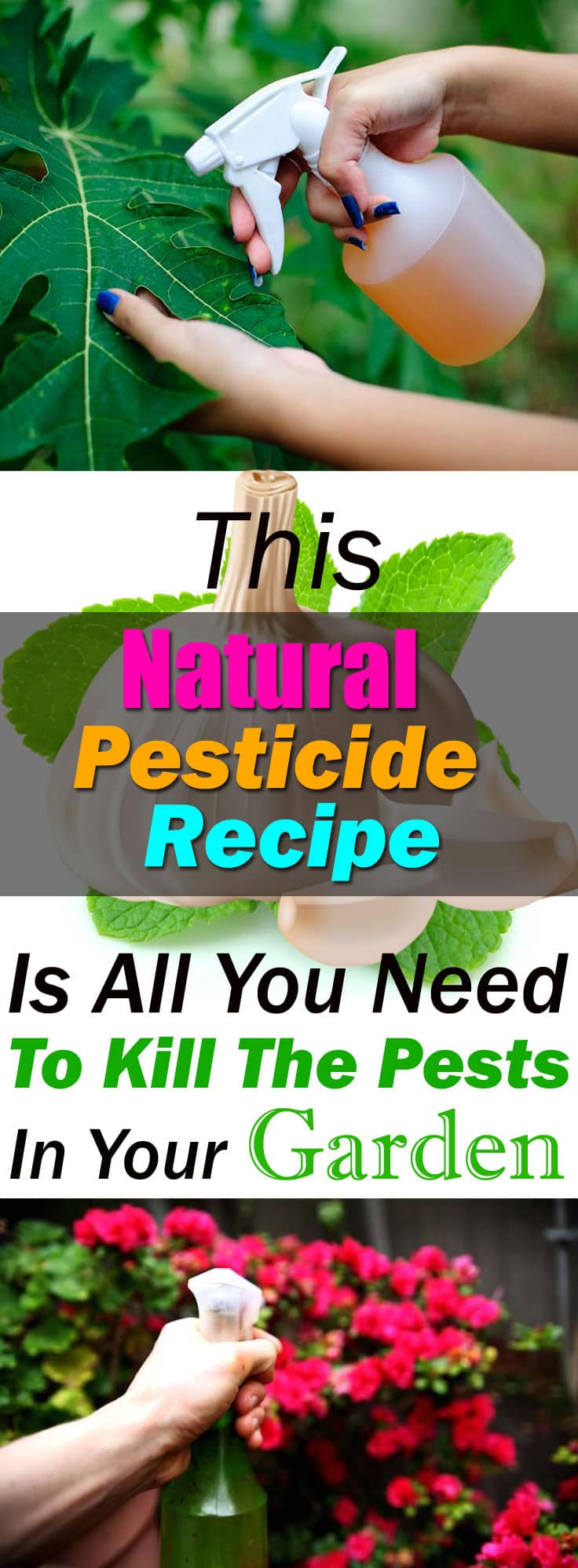This homemade pesticide recipe is CHEMICAL FREE, all natural and easy to prepare. 5 effective ingredients together and your plants will be free of pests.
We all know how harmful chemical pesticides are, for the ecosystem and our environment. And after knowing all that if you’ve thought to go organic and looking for some natural ways to get rid of garden pests, you’re on right track.
Commercial pesticides are one of the most effective ways to tackle the problem of pest infestation but if you want to use homemade natural pesticides like this one, use it regularly for better results.
You can apply this amazing pesticide using the sprayer on your vegetable garden and herbs suffering from common pests and really it does work. Once in a week is sufficient, however, if the invasion of insects is way too much to handle you can apply more frequently. Once the plants start to recover, use it in every 2 weeks or so to get rid of pesky pests.
Things You’ll Need
- 2 Whole Garlic Heads (Separate and peel the cloves)
- 2 Tablespoon Turmeric powder
- 2 Tablespoon Cayenne pepper (Or use any other hot pepper variety)
- 2 Small Squirts of Dishwashing Liquid
- 3 Cups of Mint Leaves (Sprigs included)
- 12 Cups of Water
Preparation
Step 1
Add garlic and mint to crush it in a food processor for a few seconds. Once done, add the water (in the quantity mentioned above) and pepper to the mixture.
Step 2
Transfer the mixture into a pot or boiler to boil this solution for a few minutes.
Step 3
Once boiled, remove from heat and let this sit overnight. That’s all, your natural pesticide spray is ready.
Step 4
Now strain the solution and add the liquid dish soap into it. Keep the solution into a bottle or sprayer.
Also Read: Plants That Attract Ladybugs In The Garden
How to Use it
Shake well before using it every time. Spray the solution all over the leaves of affected plants, don’t forget the undersides. The best time to use it when the day is cloudy, preferably in the evening or in the early morning.





You do not mention how much this makes, why you use turmeric for example, should water be added to the spritzer, etc. Would be more helpful!
Made this and just tried it. :) Wanted to know, how often to spray it on plants? Thanks!!
You can’t say that it’s natural if you’re using dishwash liquid
To Deb…Turmeric is just as an add on…but to.add Turmeric will make the potion works better due to Turmeric beneficial factor…
To Kimberly…. how often to spray was already mentioned by the writer , either you missed the caption or you didn’t read …lol…
To Jayden…the functions of dishwasher liquid is just to make the ingredients sticks longer to the plant…some sort like a glue…
We , in Malaysia use coconut or cooking oil- a drop or two for the same reason…in a small sprayer…if the sprayer is bigger , then add some more oil to be adequate to the potion….
Jayden wasnt asking what the function of the dishwashing liquid was, they were saying your description of this being “all natural” and “chemical free” is false if you are using dishwashing liquid.
Side note- chemical free is almost meaningless. The entire world is made of chemicals. Your whole body is made of chemicals. The active compounds in the plants you recommend to deter pests are naturally occurring chemicals.
Another side note- dish soap is BAD for plants according to professional horticulturalists and plant researchers.
Can this be used on raspberry plants to kill Japanese Beetles?
I love the idea of natural pesticides, but don’t love the idea of my garden smelling like garlic. 😕
How much water goes into to pot to be boiled?